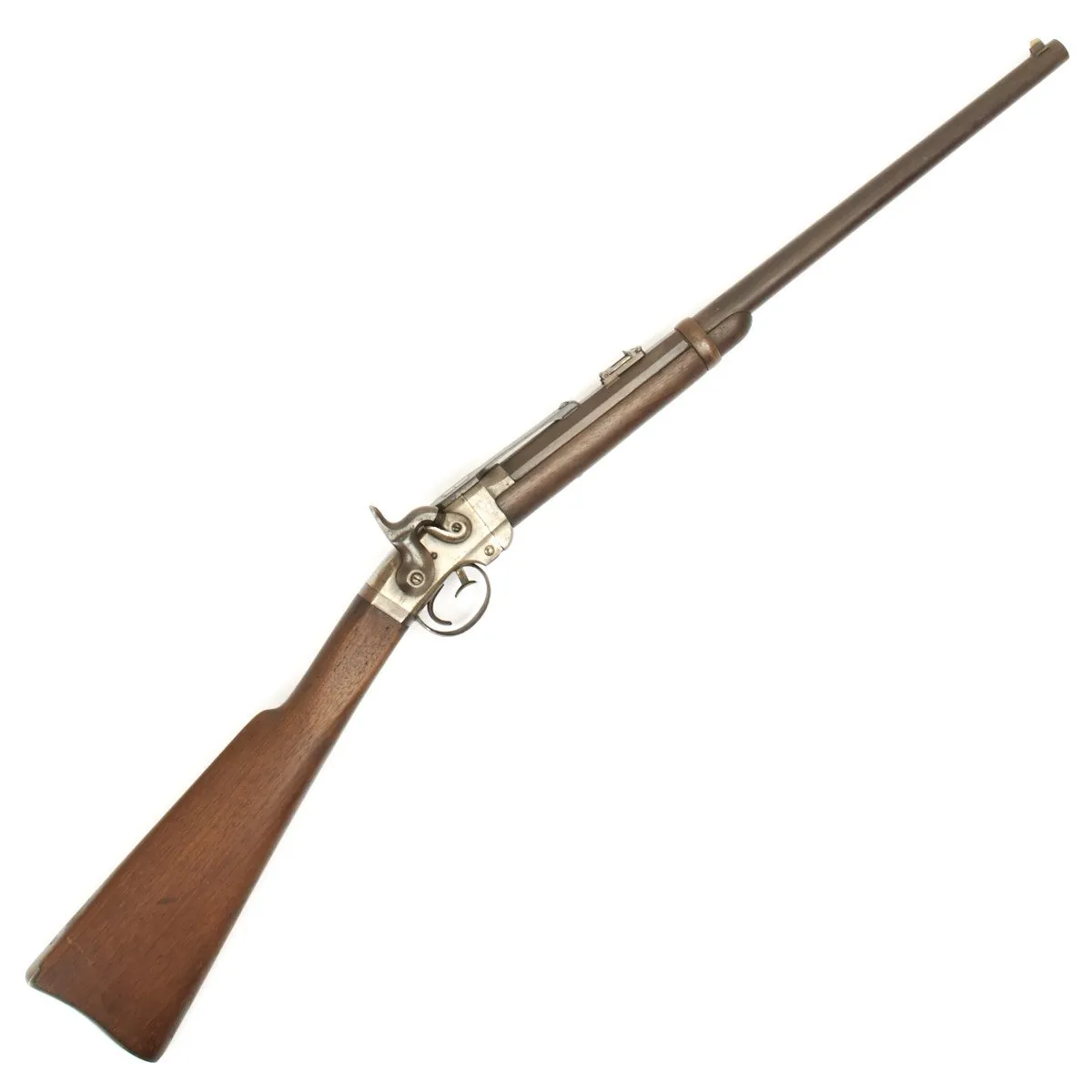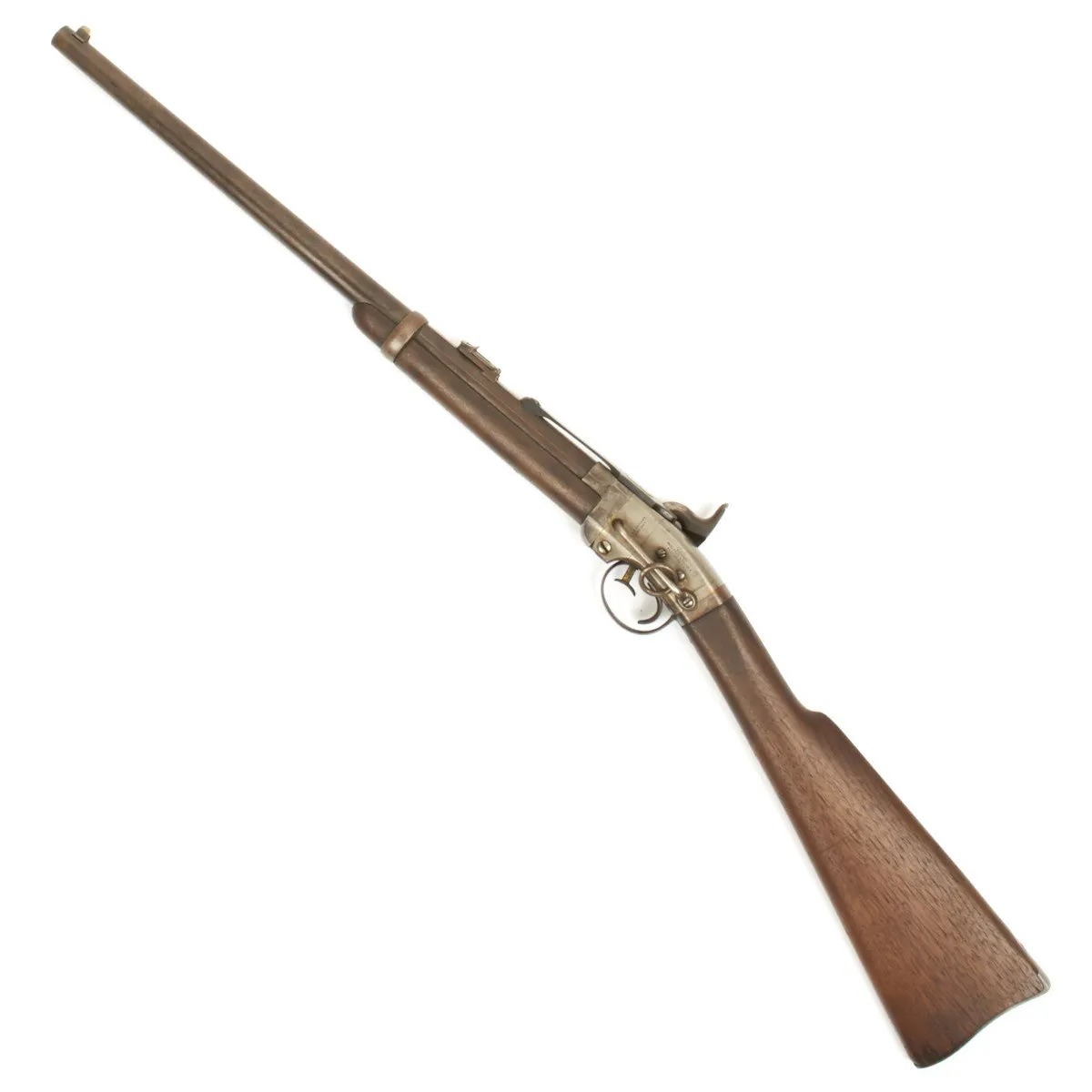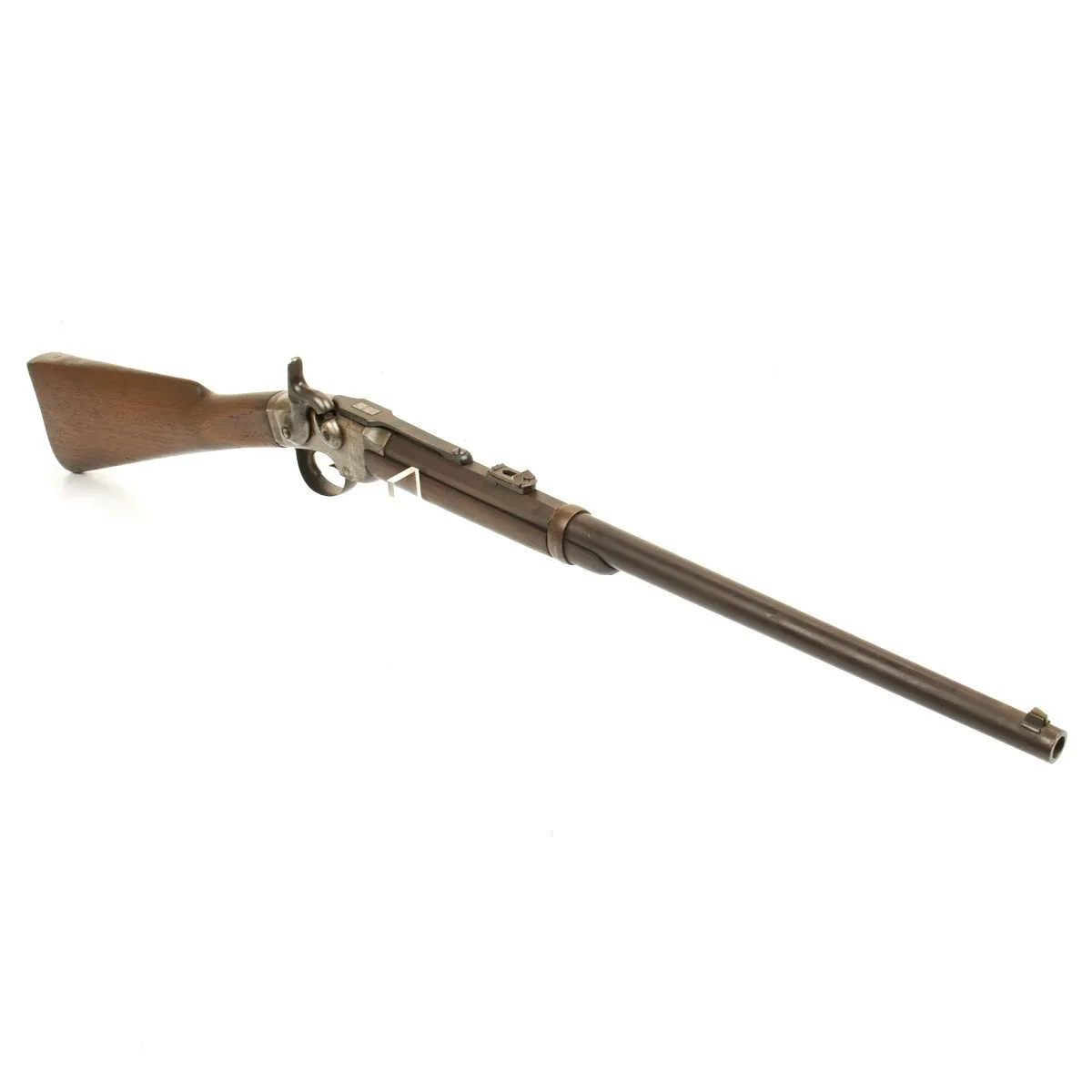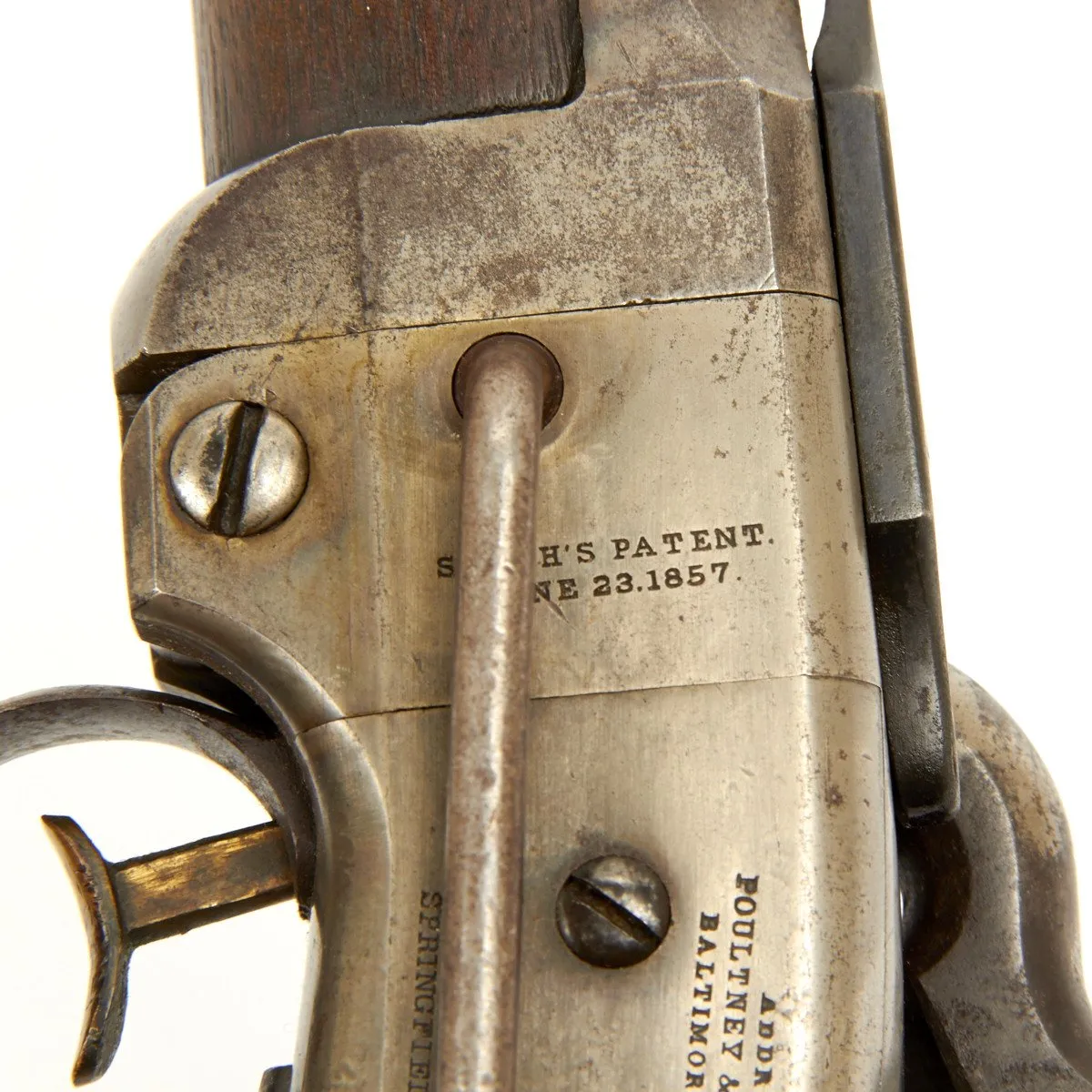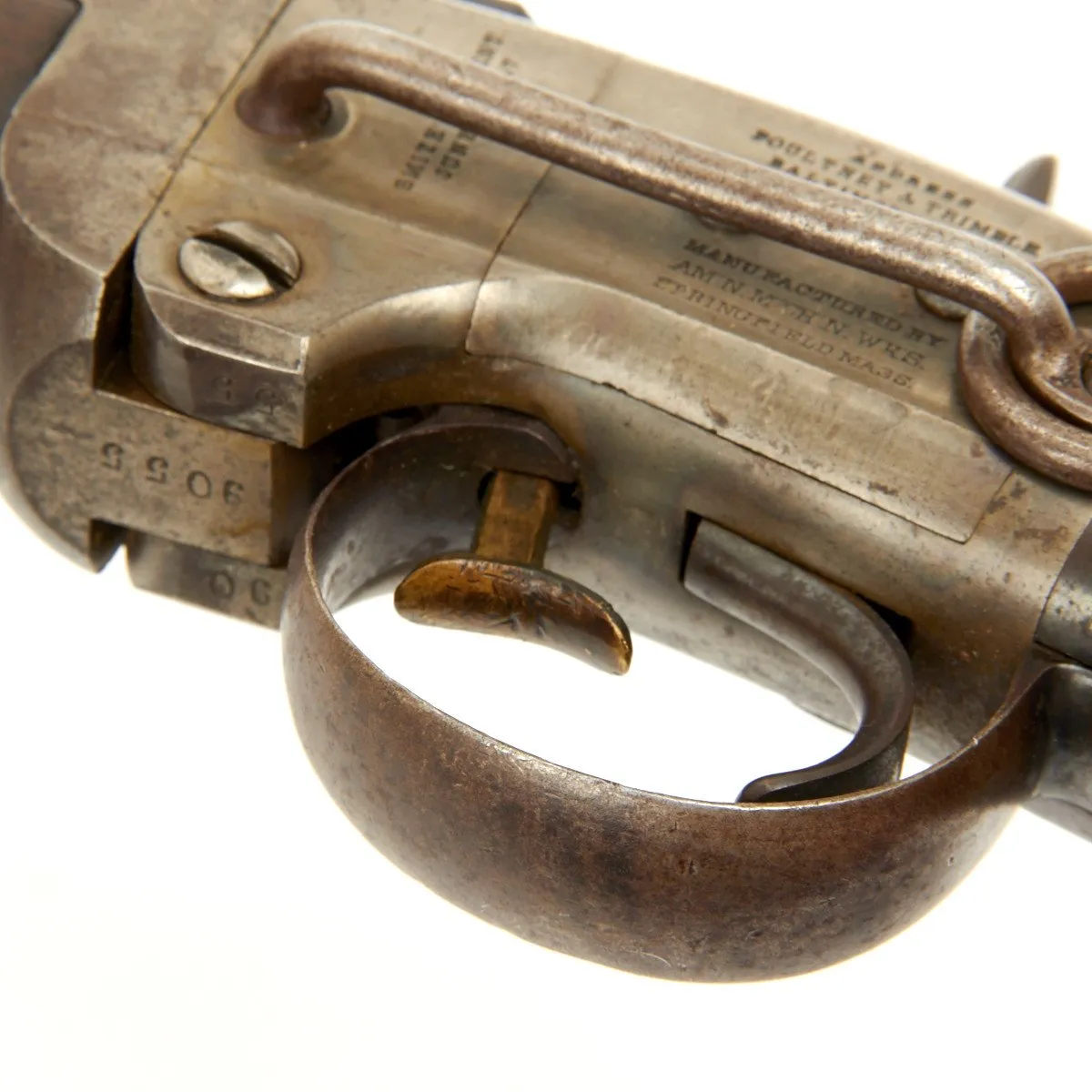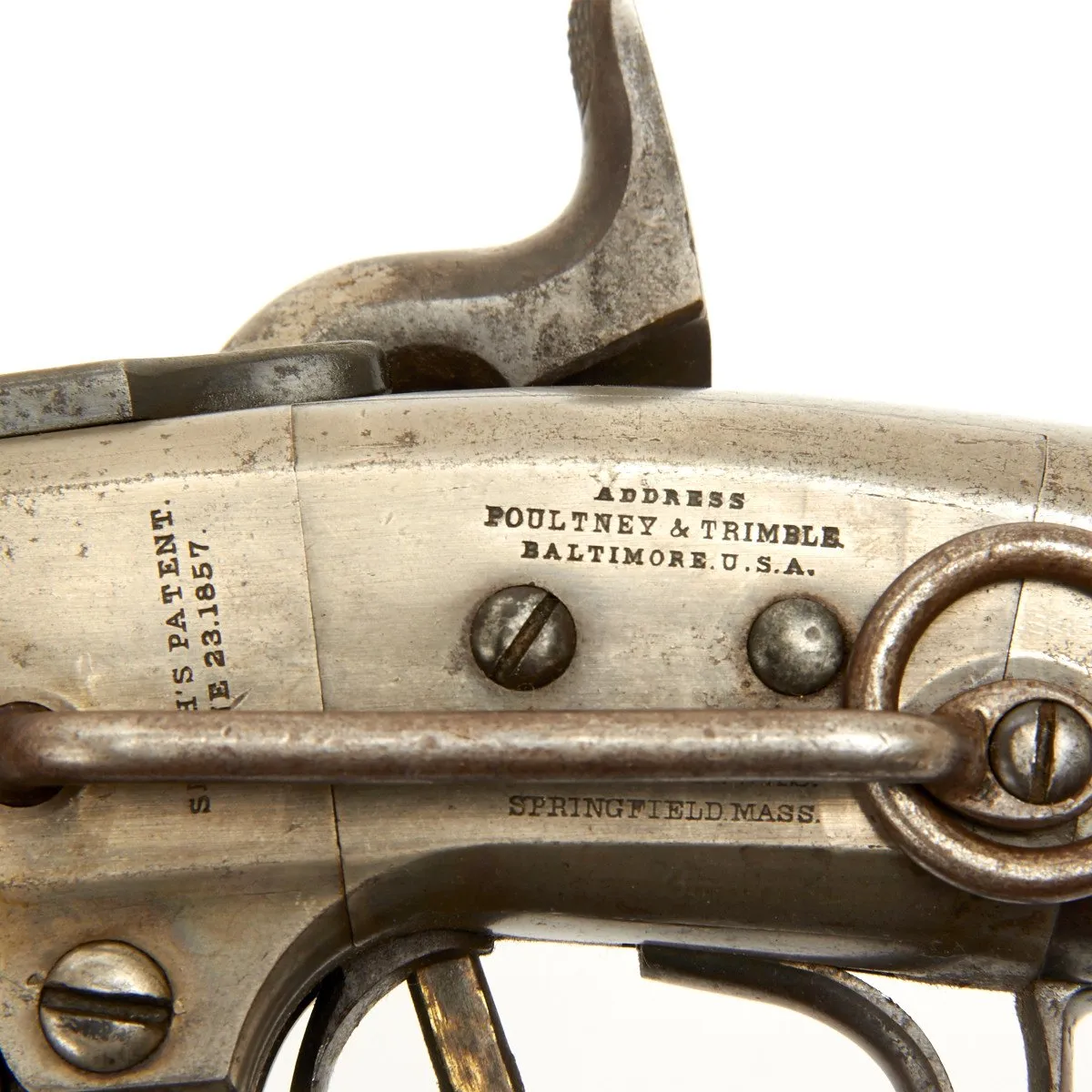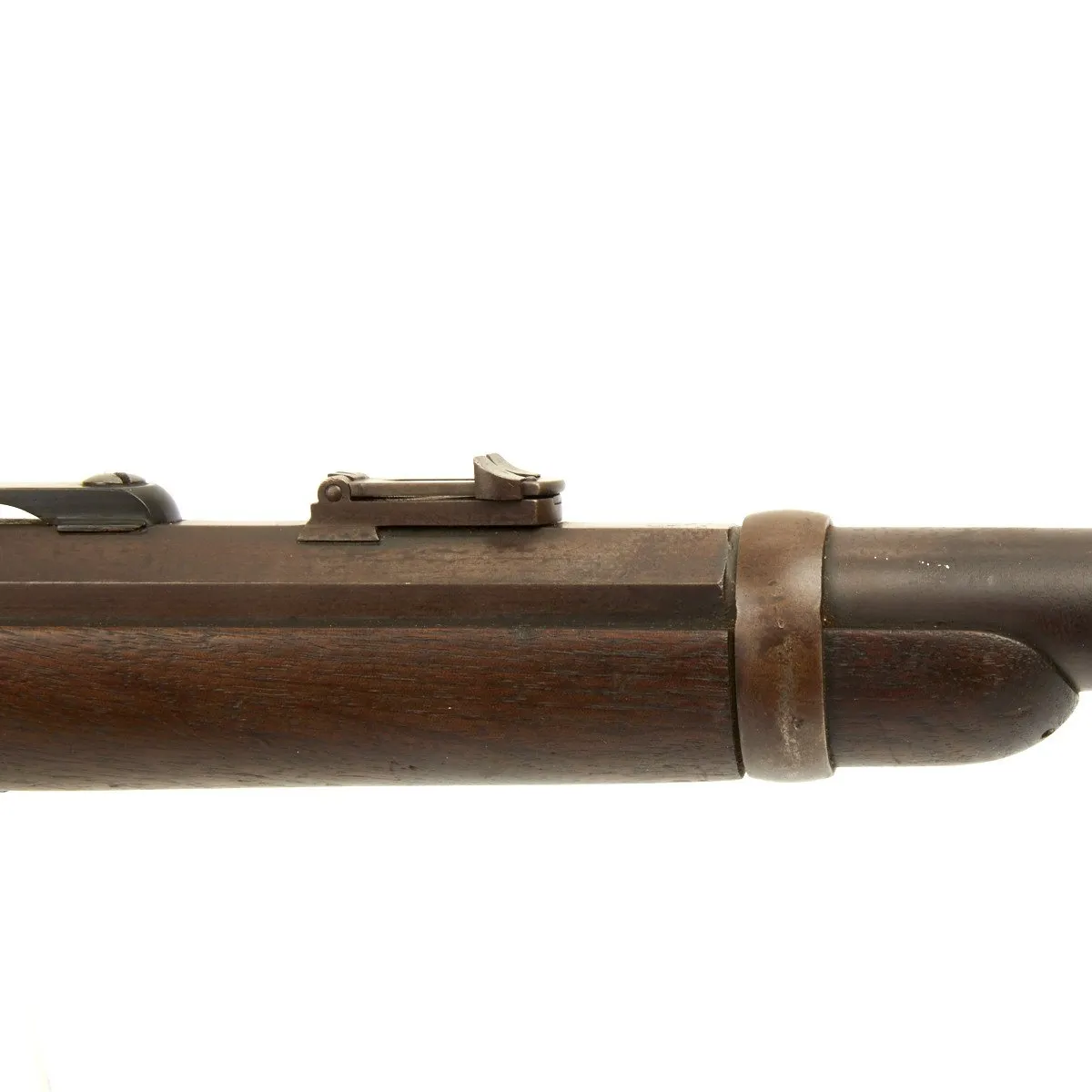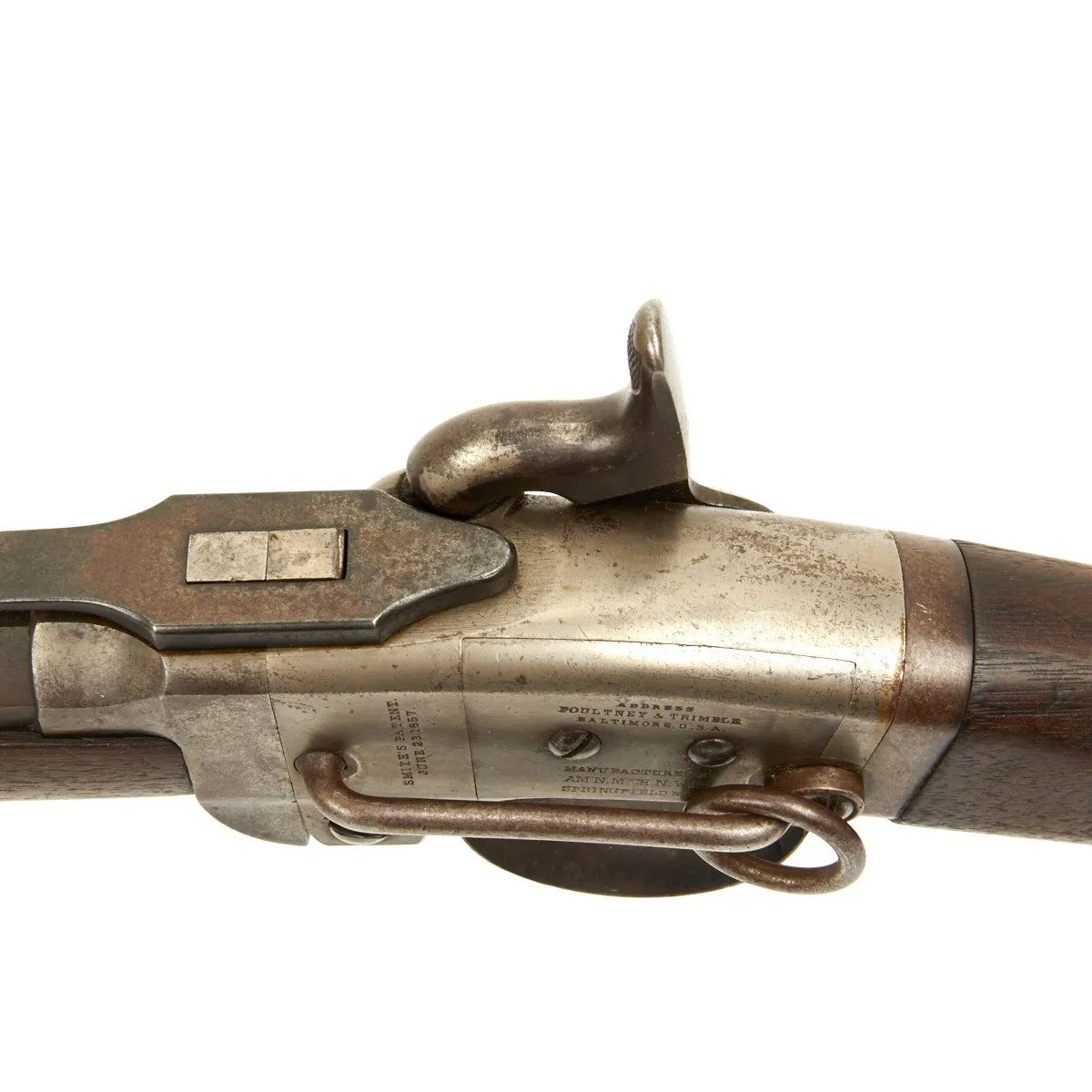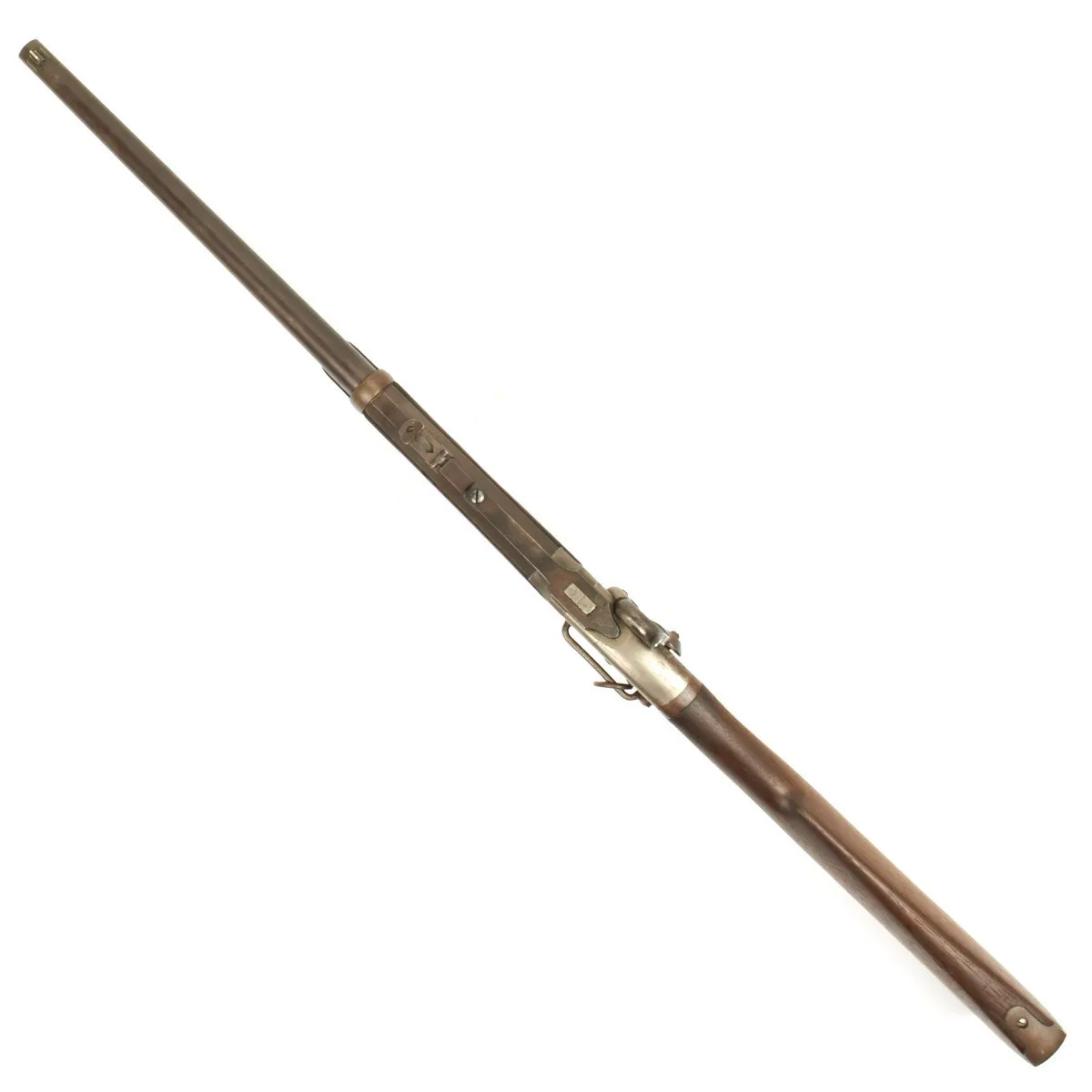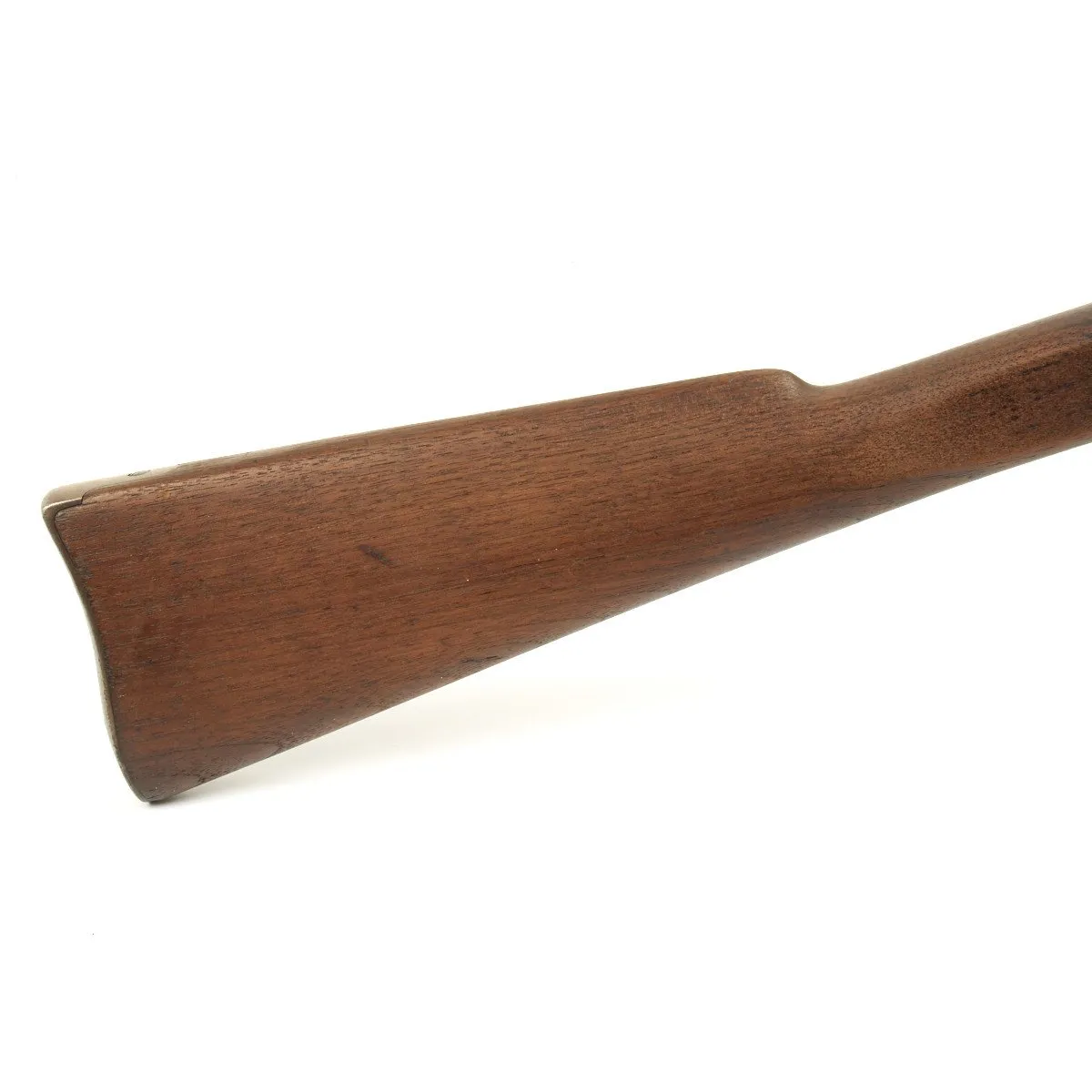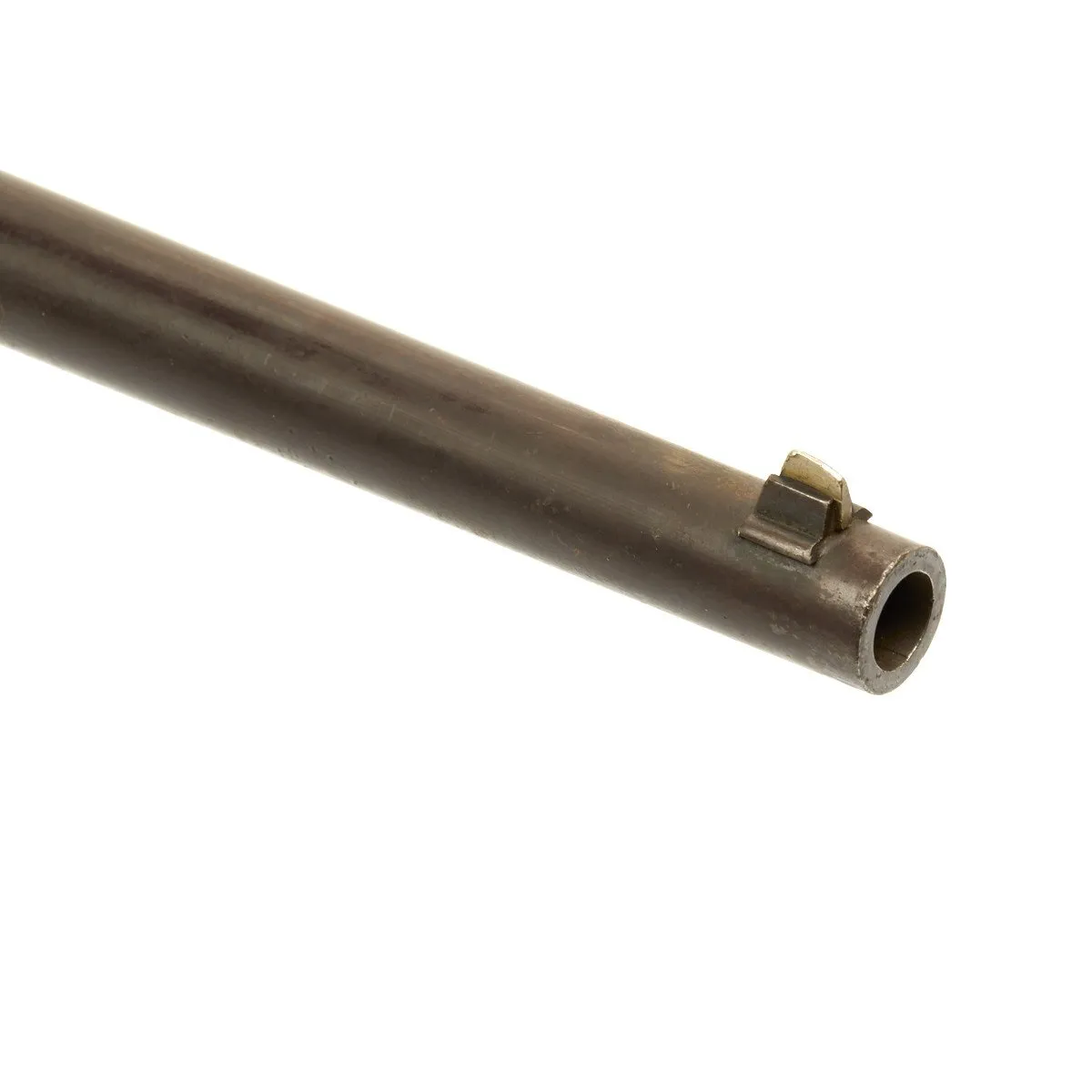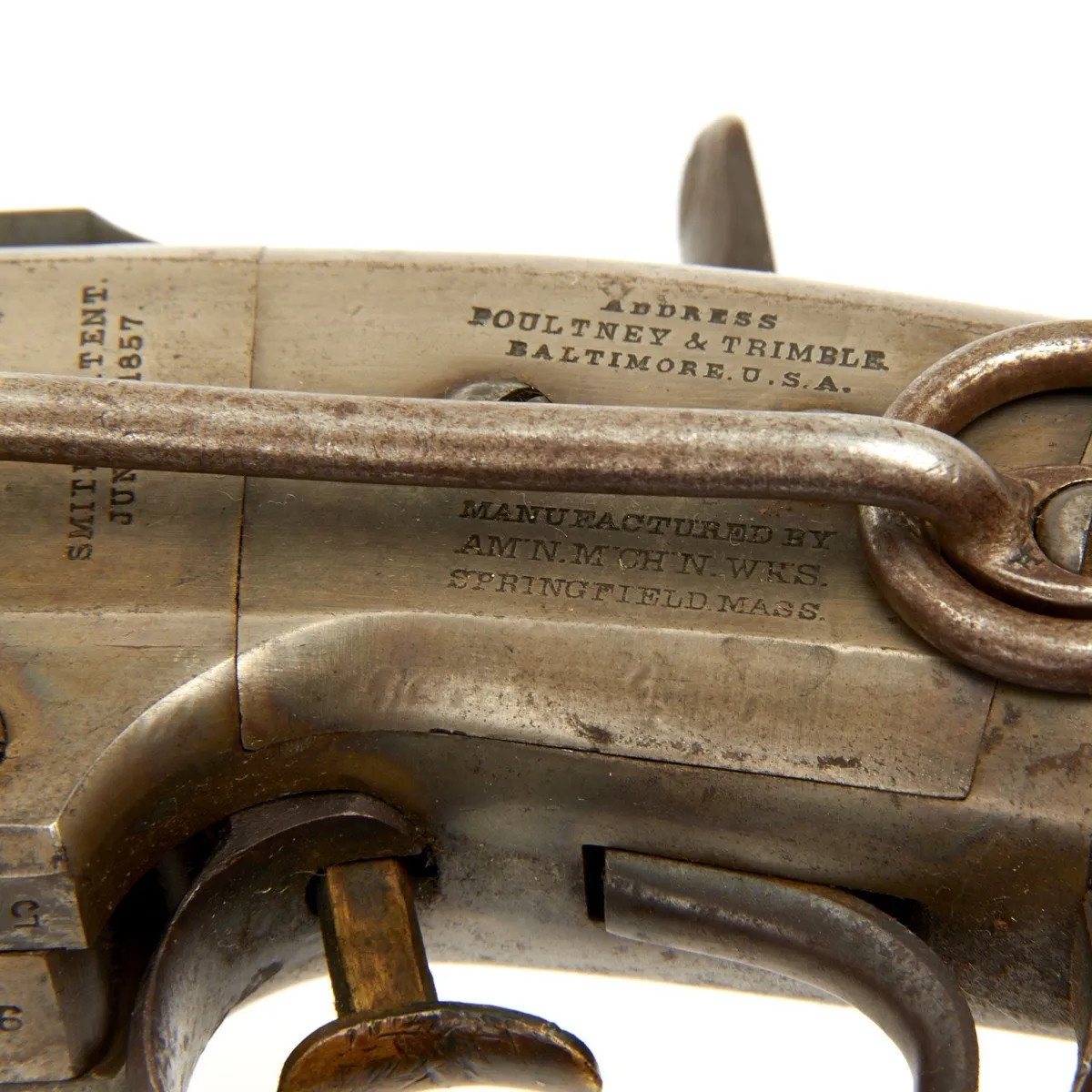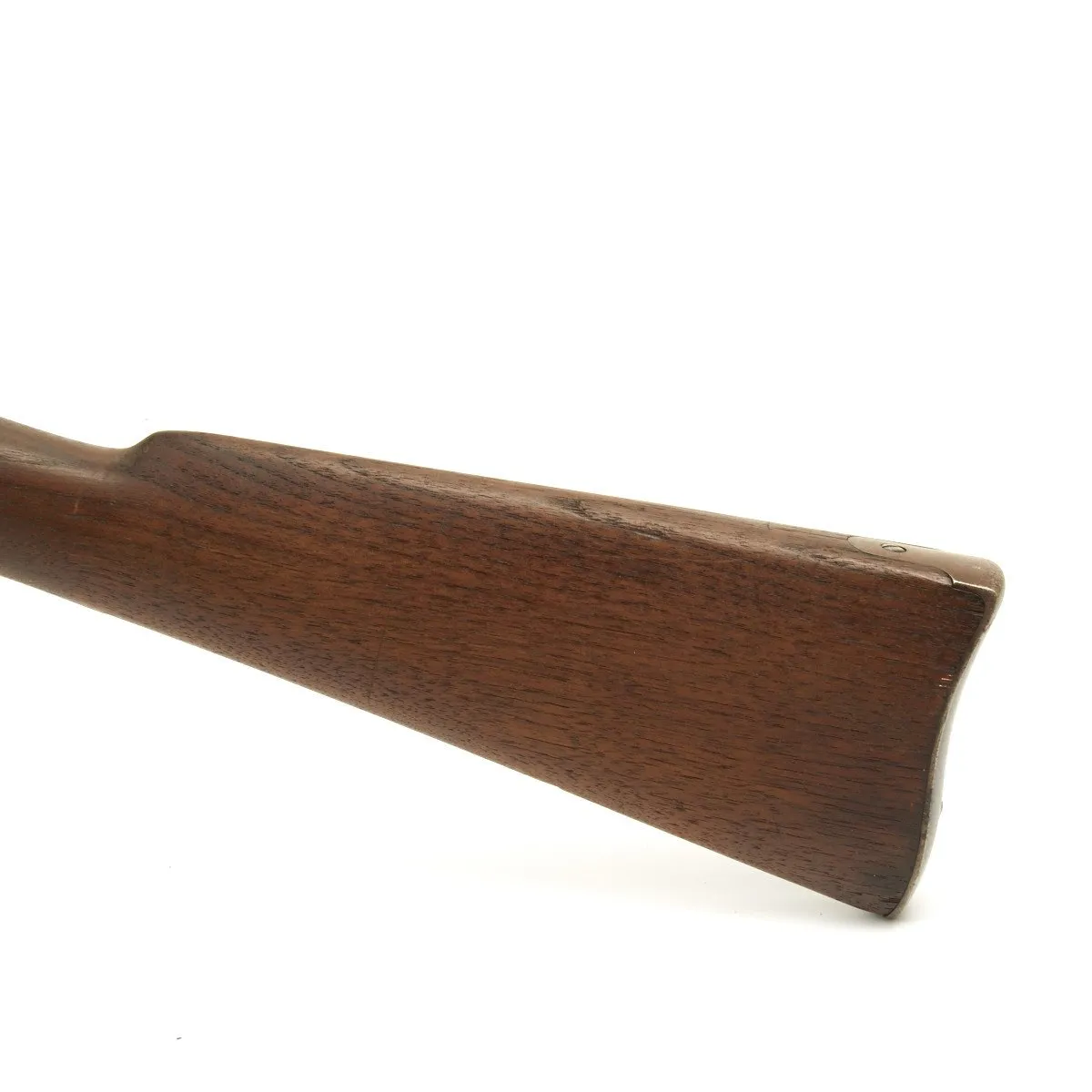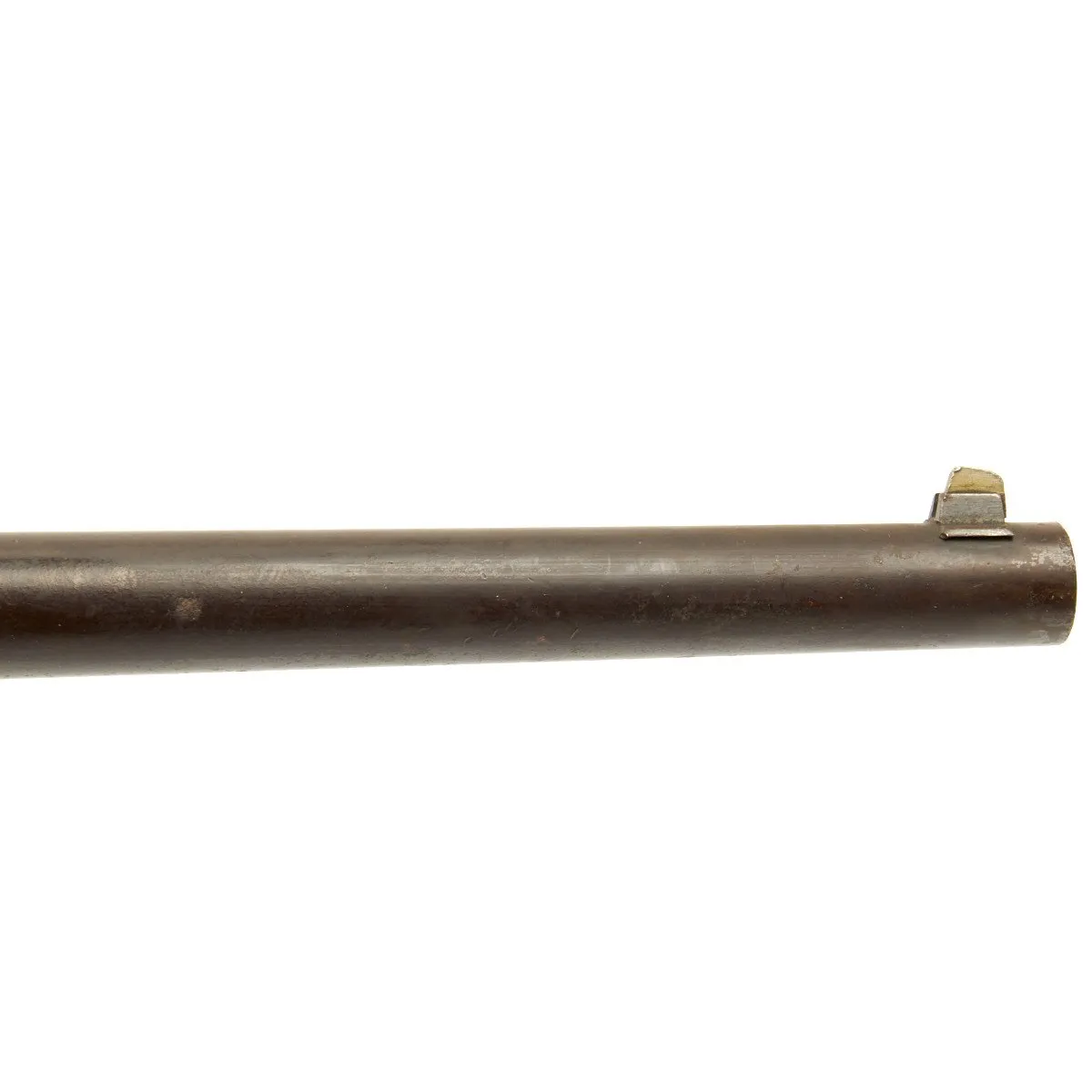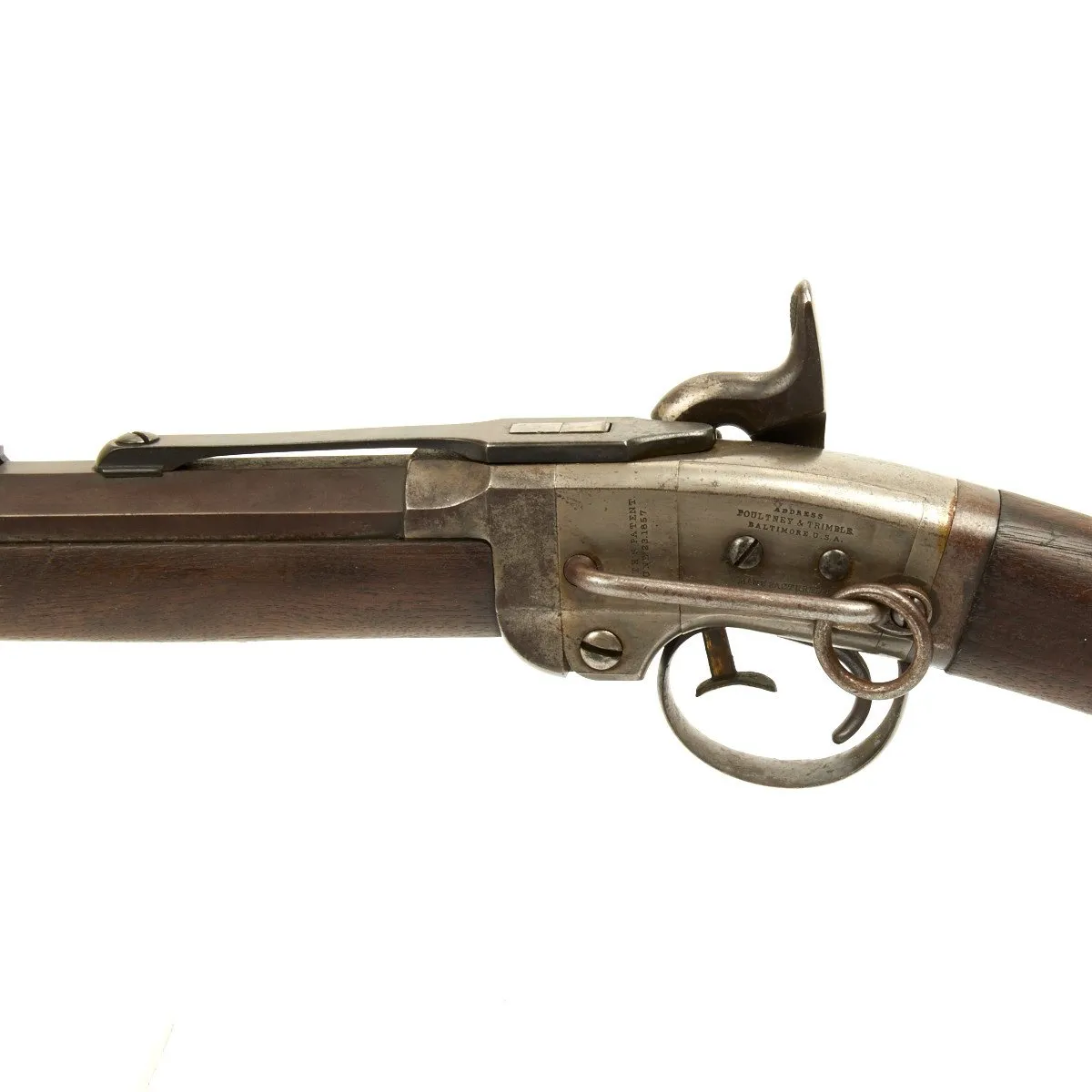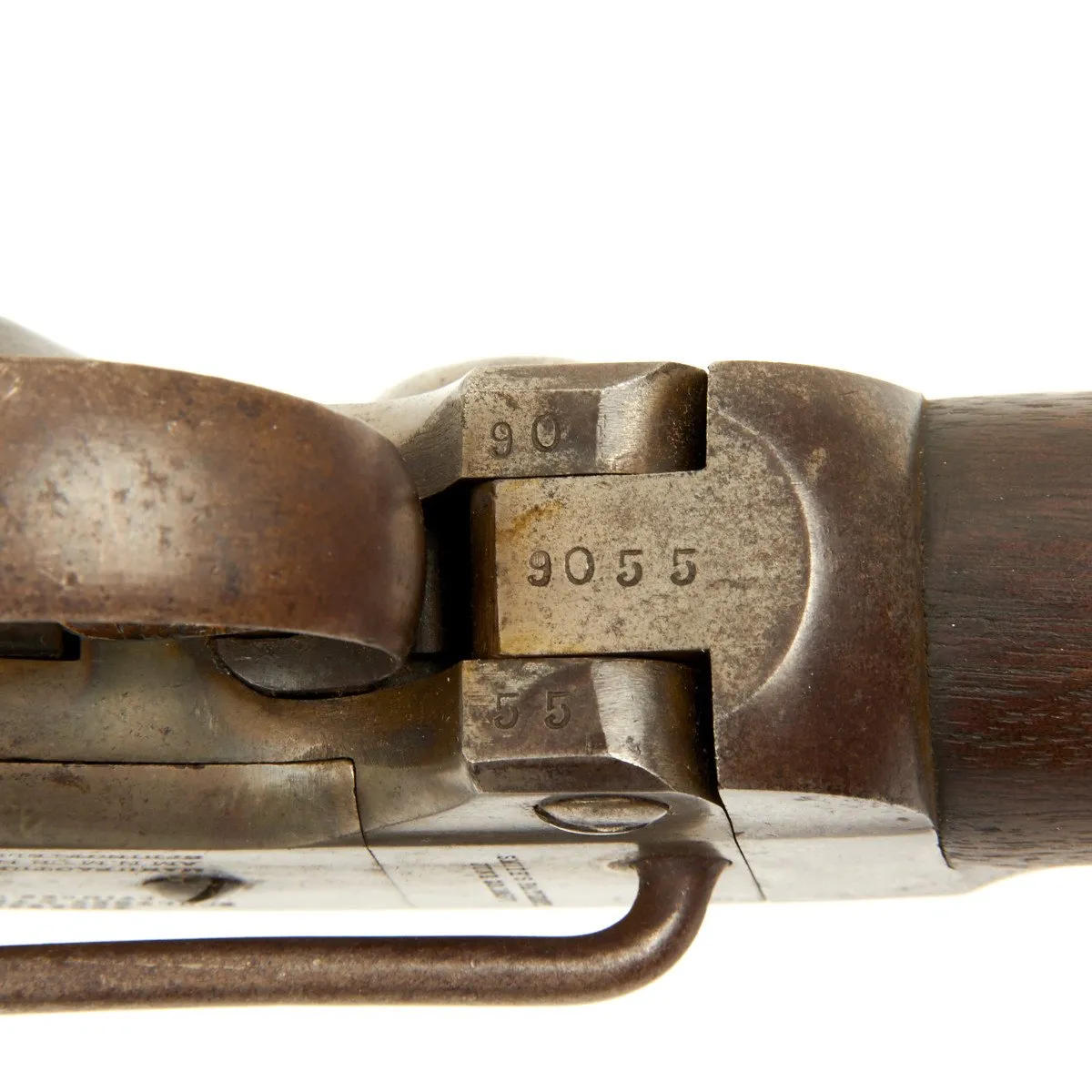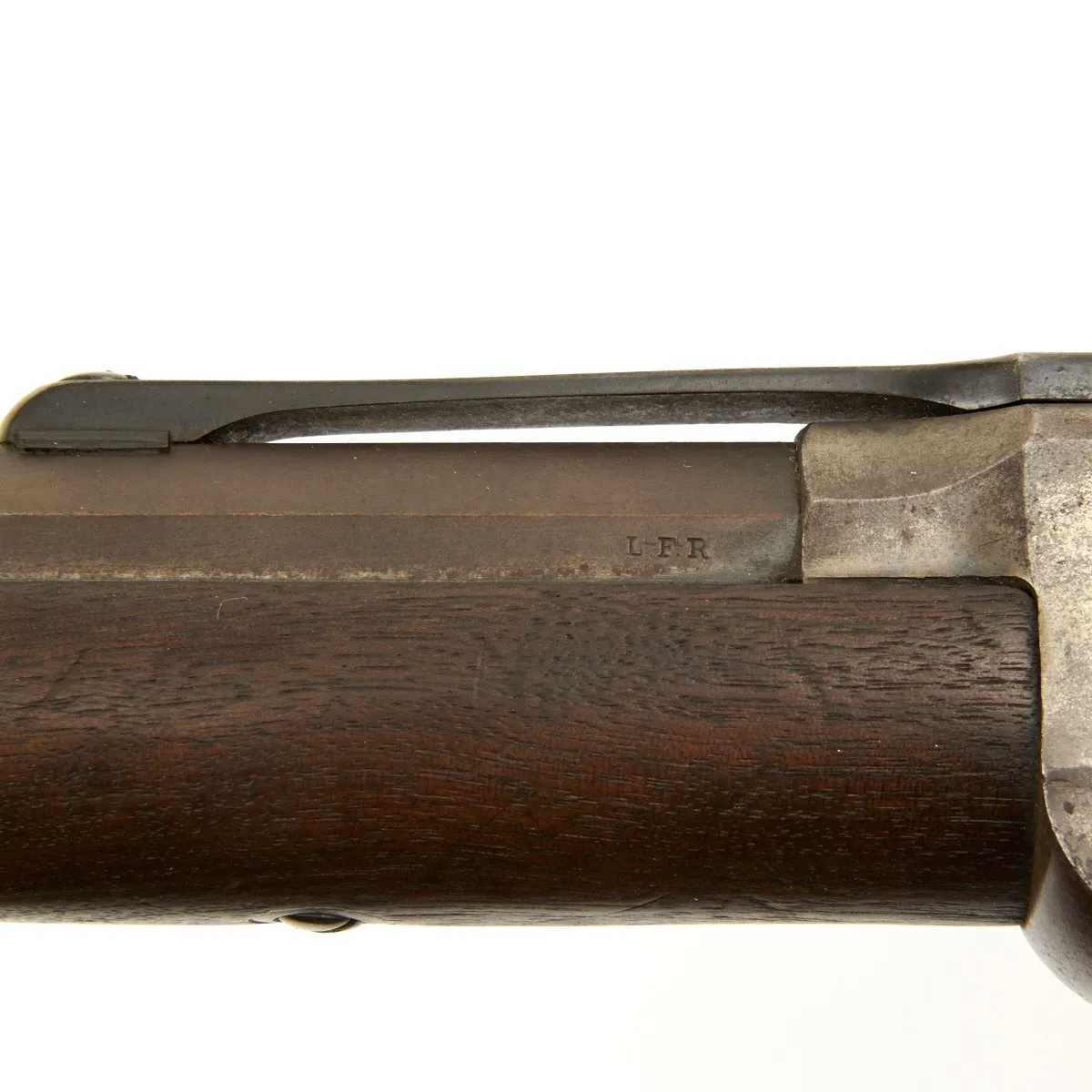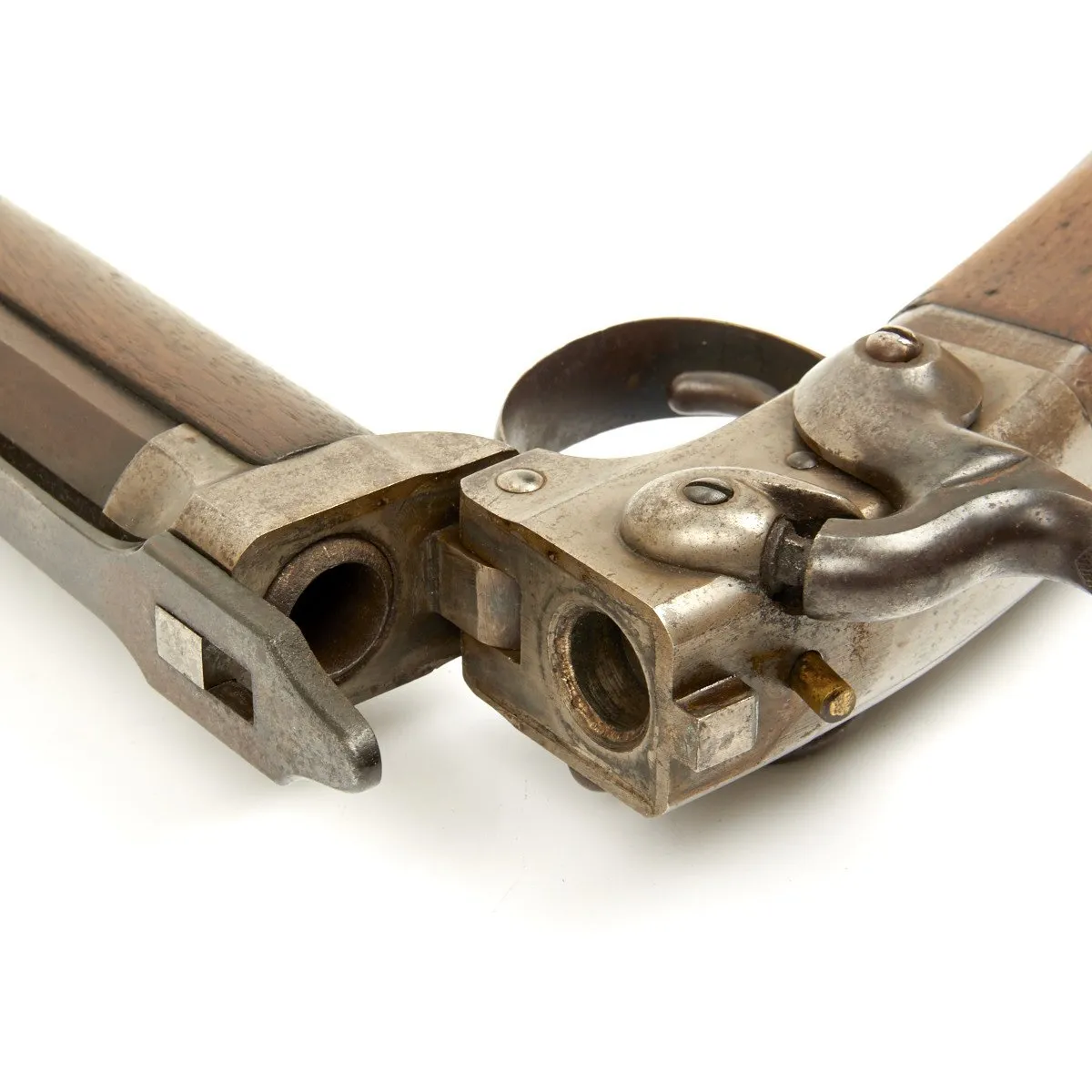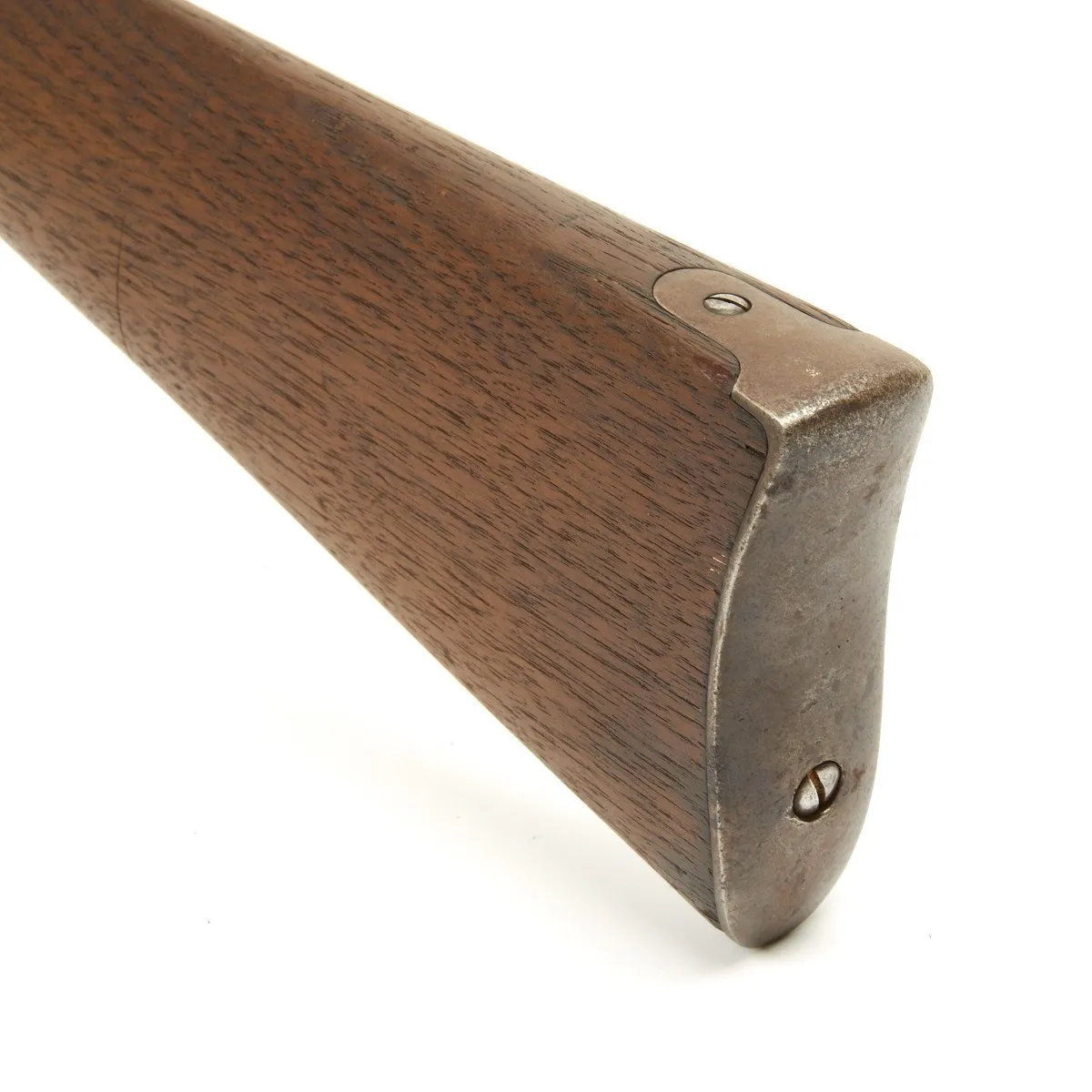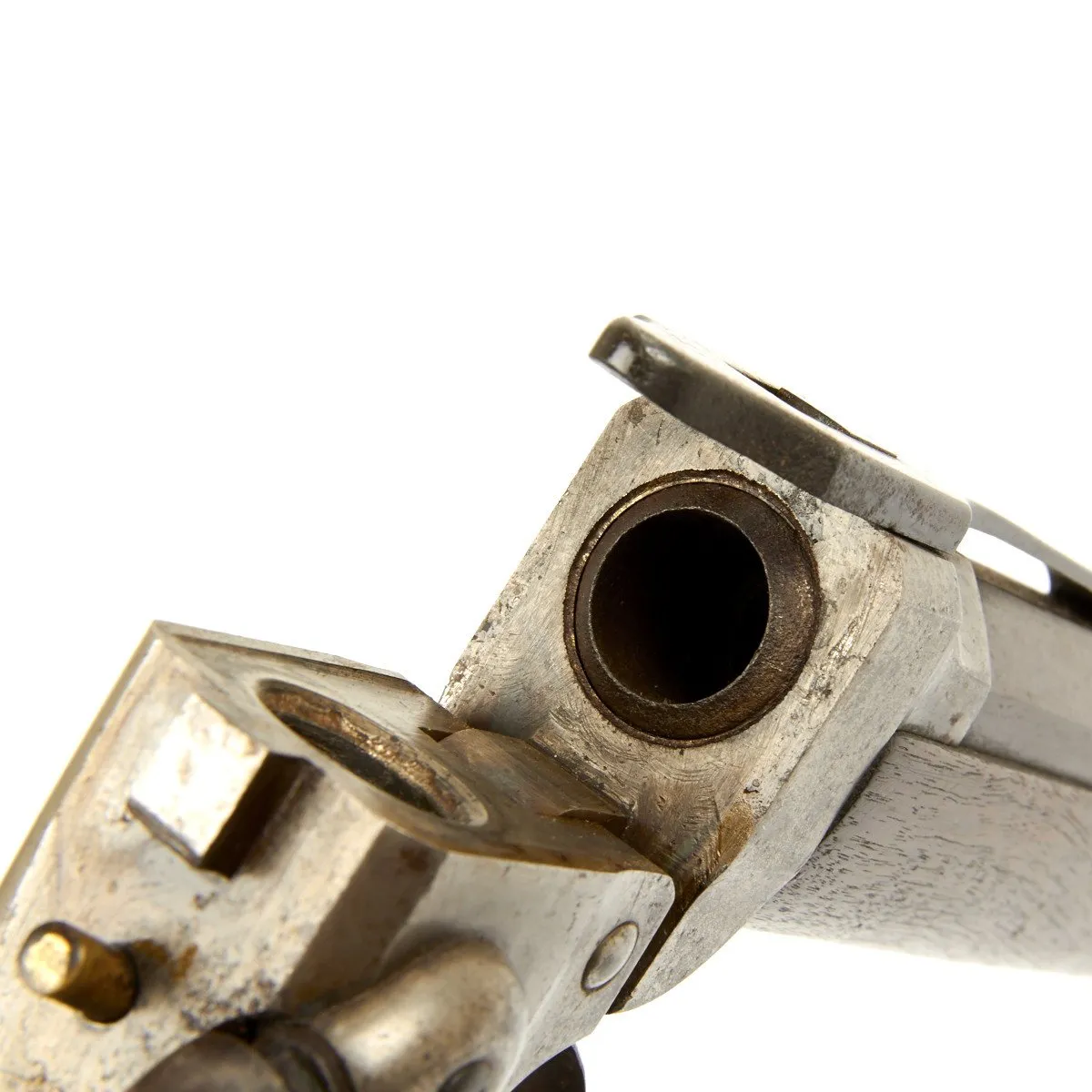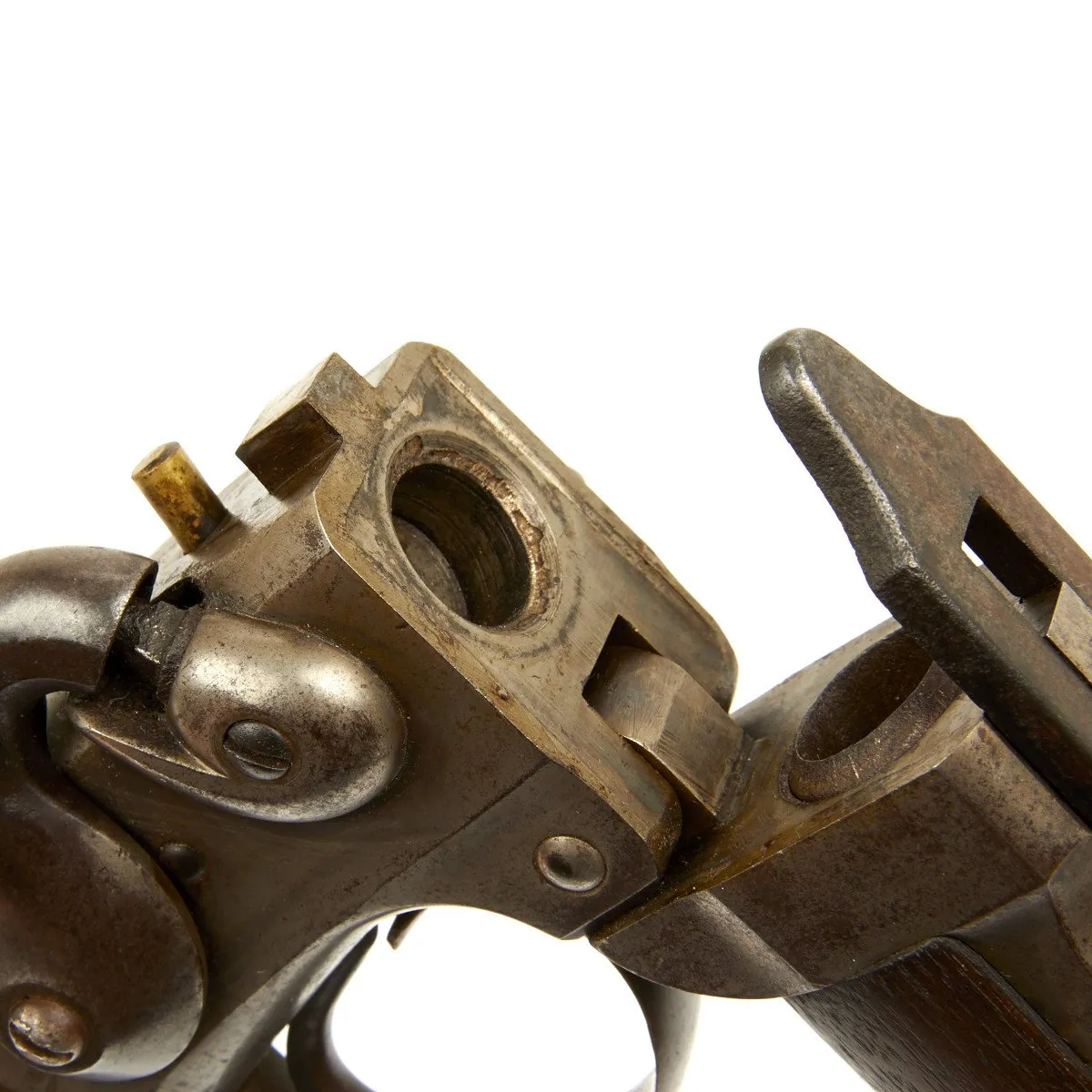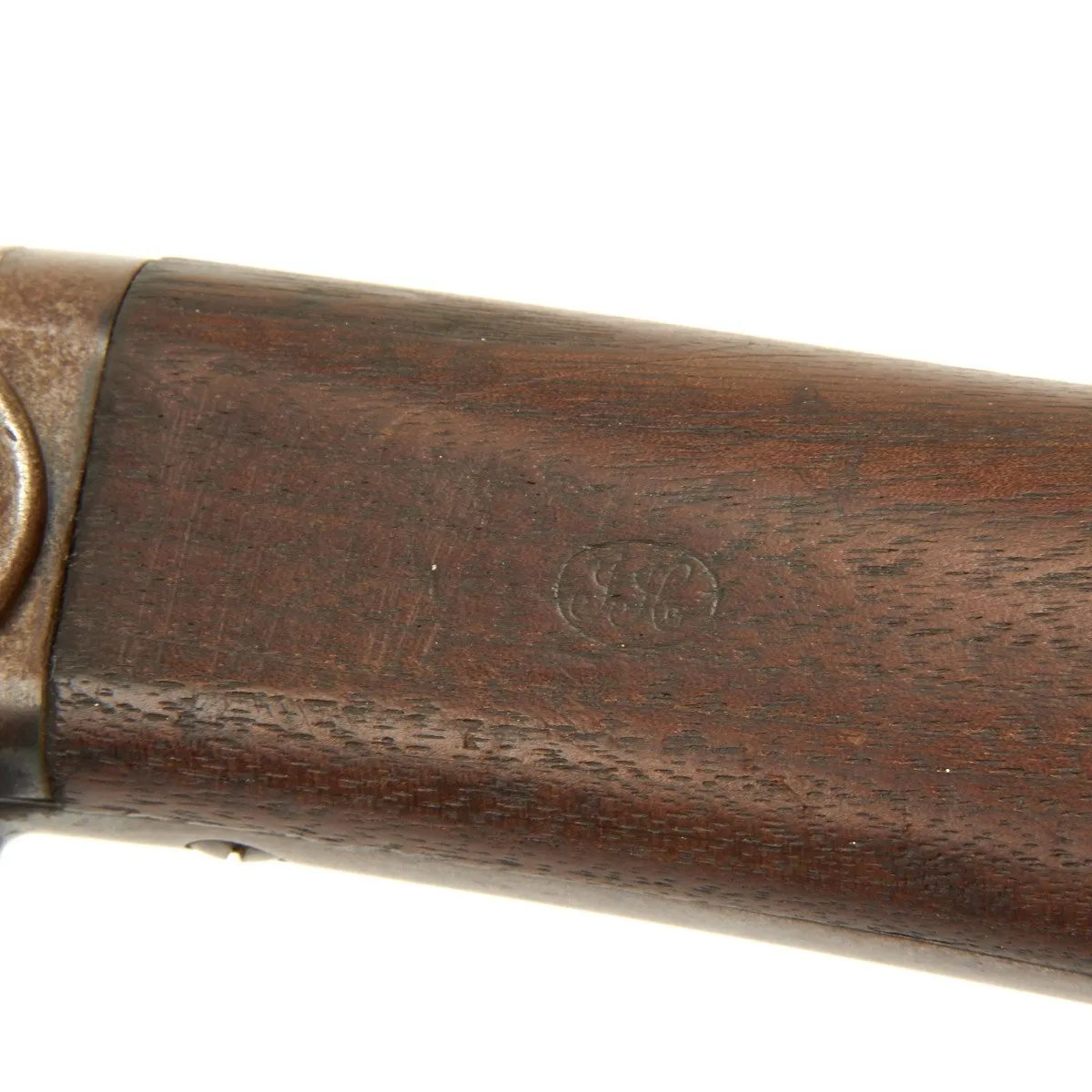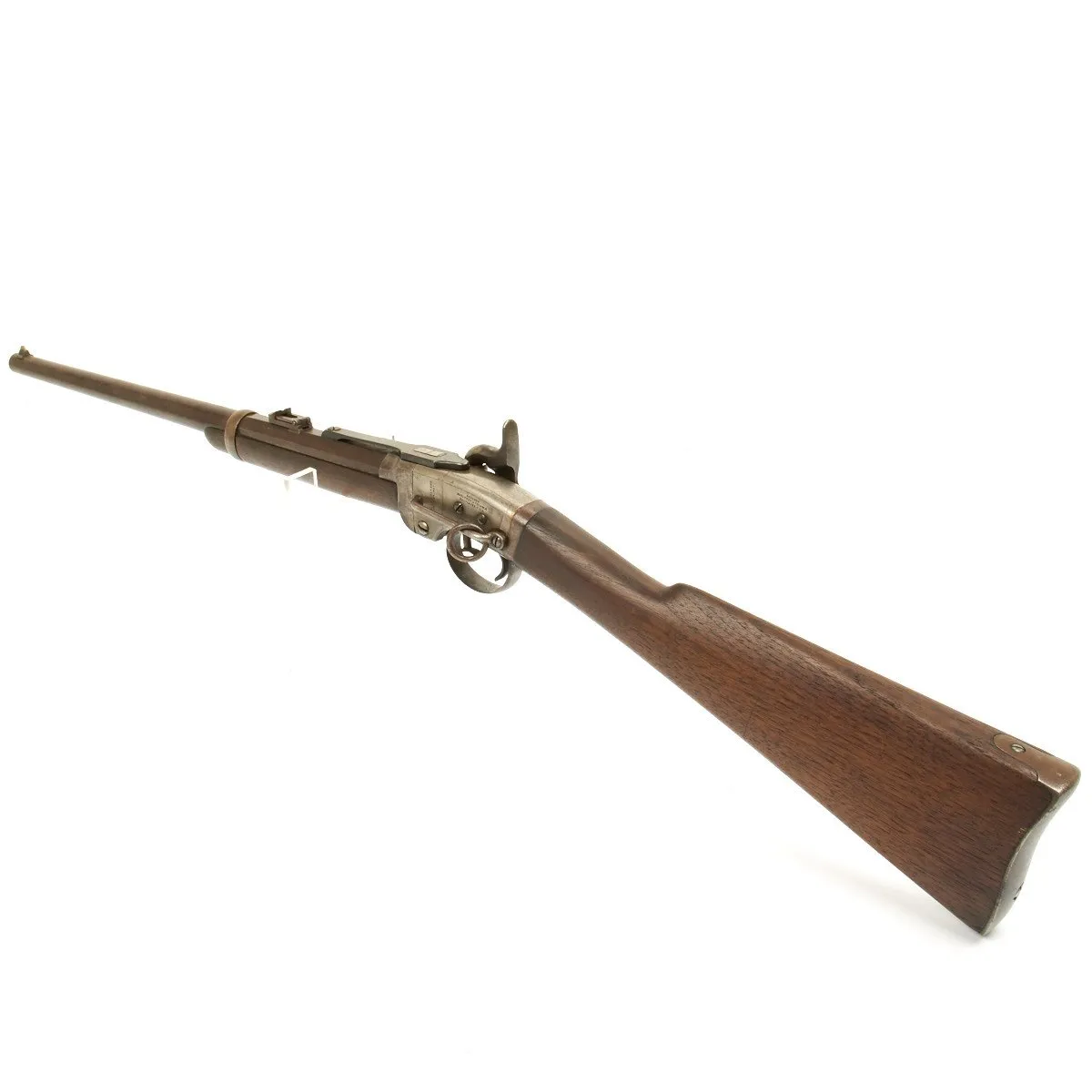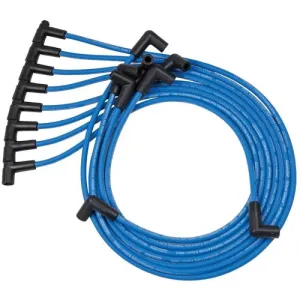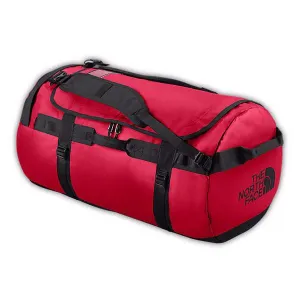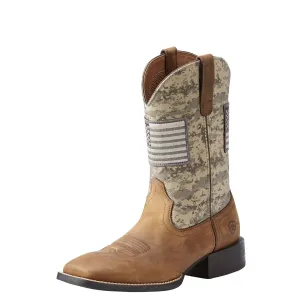Original Item: Only One Available. The Smith Carbine was a 0.50 caliber breech-loading rifle patented by Gilbert Smith on June 23, 1857 and successfully completed the Military Trials of the late 1850s. It was used by various cavalry units during the American Civil War.
The Smith Carbine was unique in that it broke apart in the middle for loading and it used rubber cartridges which sealed the gases in the breech. The downside was that these cartridges were difficult to remove.
The carbines were built by Massachusetts Arms Company of Chicopee Falls, Massachusetts; the American Machine Works in Springfield, Massachusetts; or the American Arms Company in Chicopee Falls. The name of the distributor for the manufacturer, Poultney & Trimble of Baltimore, Maryland, is often stamped on the carbine's receivers.
This is a rare Civil War era example, martially inspected, complete and original Smiths Patent Carbine in a very nice condition. This Smiths Patent Carbine carries a four digit serial number and receiver stampings that reflect a true example produced at the American Machine Works factory in Springfield, Massachusetts.
The Smiths Patent Carbine, a single shot, breech loading, percussion .50 caliber, was one of the most important Federal Cavalry carbines of the Civil War. Production of these carbines was almost entirely consumed by government contracts. A total of approximately 30,362 Smith Carbines were purchased by the United States during the Civil War.
The left side of the receiver is marked with the standard address and patent dates: on the forward portion of the receiver, stamped horizontally, is:
AM' N M'CH'N WKS
SPRINGFIELD MASS
On the rearward portion of the receiver above the saddle ring bar, stamped horizontally, is
POULTNEY & TRIMBLE
BALTIMORE, U.S.A.
Underneath the saddle ring bar, stamped horizontally, is:
JUNE 23, 1857
The serial number 9055 is marked on the bottom of the frame in two places, on the bottom of the barrel (under the hand guard) and on the rear section of the frame at the butt stock attaching point.
The part octagonal and part round barrel is 21 5/8 inches long, with blued finish. The barrel is fitted with a blade front sight and a folding ladder rear sight. The octagonal portion of the barrel is 6 1/8 inches long and consists of 5 flats over the top 180 degrees of the barrel and a round surface for the lower 180 degrees (the portion under the hand guard). The front 14 inch section of the barrel is round. The barrel is stamped on the left side on the 9Oclock flat with the inspectors stamp L.F.R.
The bottom of the barrel beneath the walnut hand-guard is stamped (in order from the forward portion of the area under the hand-guard to the rearward portion) with an H aligned with the longitudinal axis of the barrel, then JH at 90 degrees to the longitudinal axis of the barrel, then an R aligned with the longitudinal axis, and then the serial number 9055 aligned with the longitudinal axis.
The rear sight is stamped with a slanted "H" on the base. The same slanted "H" stamp is repeated on the base of the saddle ring bar. The walnut buttstock carries a cartouche on the left side of the wrist with J H in cursive script in an oval. The trigger guard tang has a tiny W stamp. The tiny P is on the toe of the butt plate. [JH = initials of the US government armory sub-inspector, Joseph Hannis; L.F.R. = inspectors stamp not identified in the historical records; H = inspectors stamp not identified in the historical records; R = inspectors stamp not identified in the historical records.]
The receiver finish is a combination of deep blue and bright steel. The hammer and frame are case-colored and the barrel latch is niter blued. The barrel latch release lever is brass and very elegant in design and execution. The saddle ring and bar mounted on the left side of the receiver are white steel with a niter blued mounting screw. The matching walnut stocks are finished with a smooth oil hand-rubbed finish that is original to the carbine.
The walnut forearm is secured by a single blued barrel band secured in place with a single blued wood screw and a single blued screw mounted through the center of the forearm. The straight grip walnut butt stock is attached to the carbine frame with a handmade, single, slot-headed, blued bolt that extends from the interior curve of the butt stock to the threaded attaching point at the rear of the carbine frame.
The butt stock has a steel two-screw curved carbine butt plate. This beautiful and rare Smiths Patent Carbine is chambered in caliber .50. The condition is very good for the age and for the Civil War period of its birth.
The carbine retains some of its original blue finish. As to be expected, there are various marks, rubs, scratches, and similar indications of an age exceeding 150 years. The barrel, specifically, has areas of surface finish rubbing. The barrel latch retains most of the original bright niter blue finish with loss in areas due to flaking. The hammer and receiver retain 50% original finish with a bit of case coloring evident.
The butt plate is a smooth brown patina. The walnut stocks are very nice, with original finish, original cartouches and impressions, and a few minor pressure dents and handling marks. The markings and cartouches are sharp and correct.
Mechanically, this carbine is sound with a tight action, strong springs, bright bore, and all original components (in our opinion). Here is an important piece of American firearm history from the time of the American Civil War, and it is available to one person only; the collector enthusiast who appreciates rare and hard to find!
NOTE: International orders of antique firearms MUST be shipped using UPS WW Services (courier). USPS Priority Mail international will not accept these.




